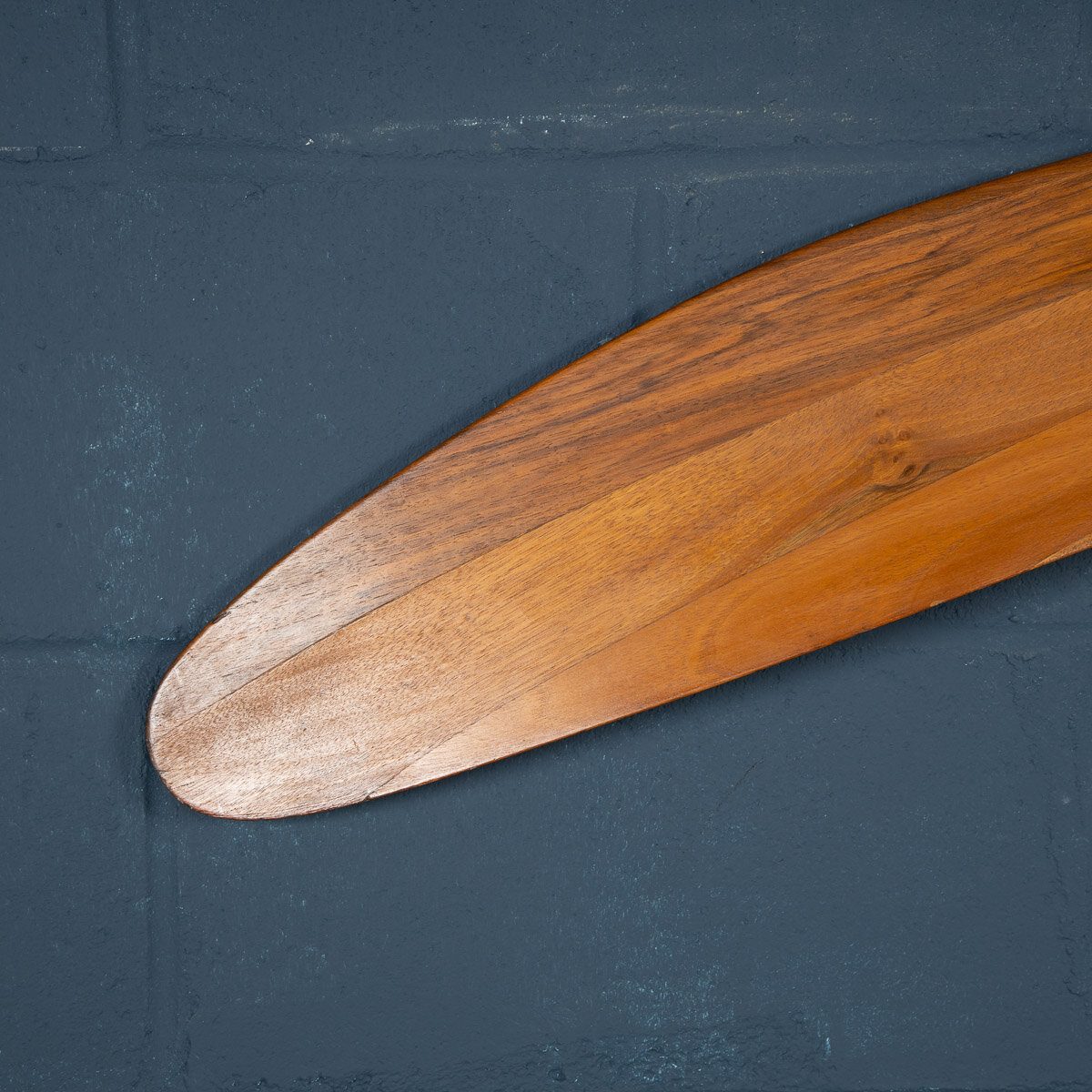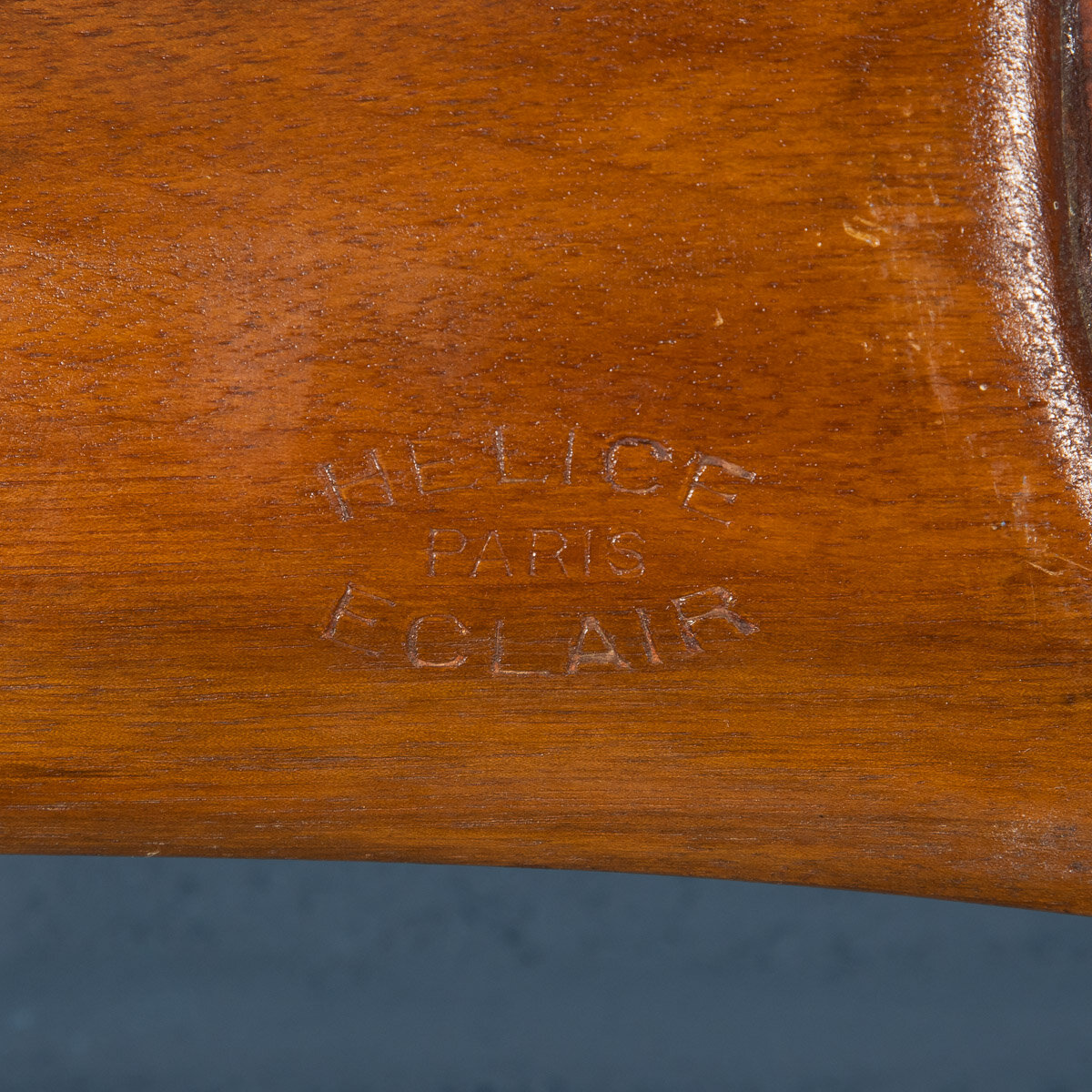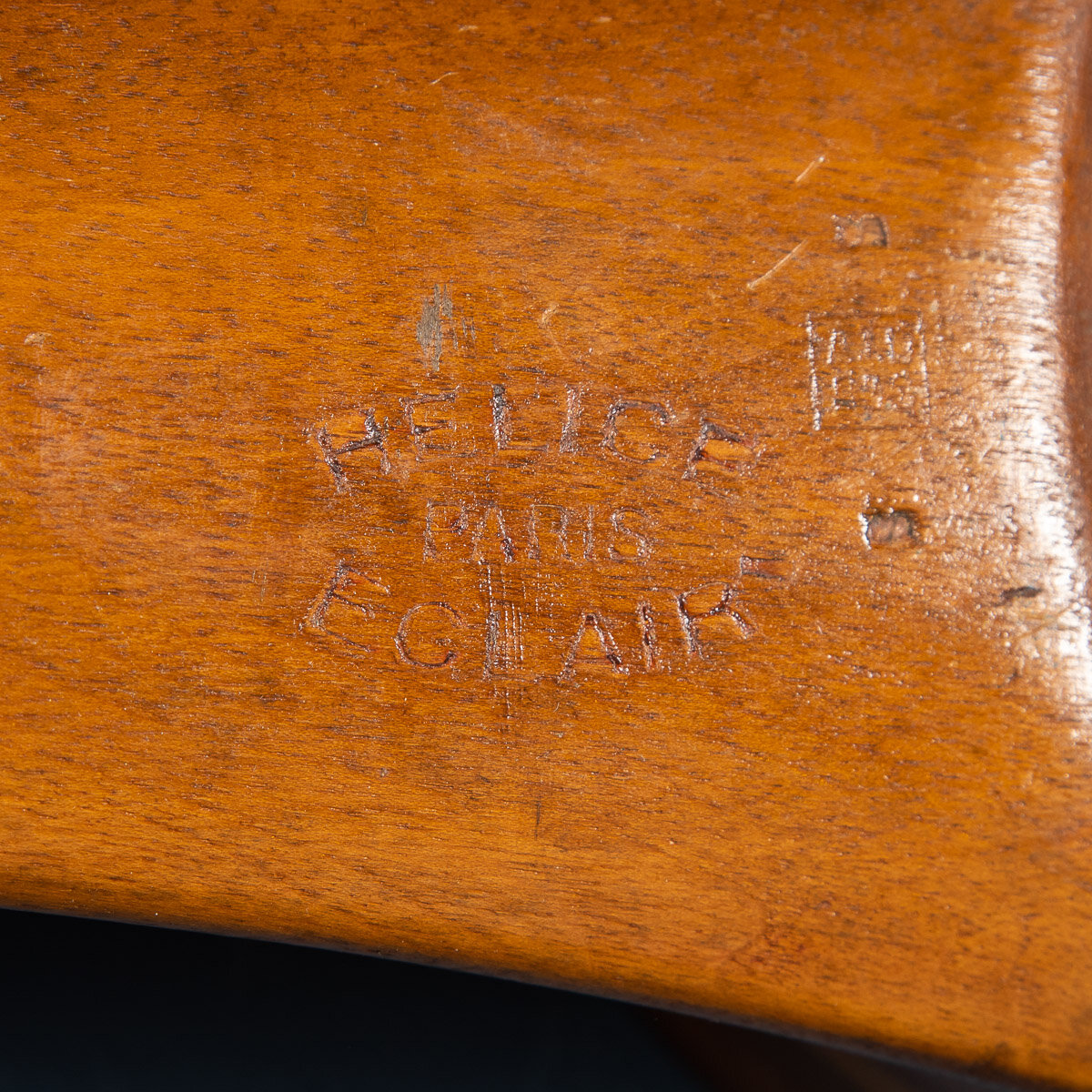 Image 1 of 11
Image 1 of 11

 Image 2 of 11
Image 2 of 11

 Image 3 of 11
Image 3 of 11

 Image 4 of 11
Image 4 of 11

 Image 5 of 11
Image 5 of 11

 Image 6 of 11
Image 6 of 11

 Image 7 of 11
Image 7 of 11

 Image 8 of 11
Image 8 of 11

 Image 9 of 11
Image 9 of 11

 Image 10 of 11
Image 10 of 11

 Image 11 of 11
Image 11 of 11












ANTIQUE 20thC FRENCH FIRST WORLD WAR WOOD PROPELLER BY HELICE ECLAIRE c.1916
A First World War French Propeller blade made by Helice Eclair, Paris. Serie No 6, No 366, mounted on a Hispano Suzia 150 engine. 8 Bolt holes. Laminated construction.
Reference Number: B6501
A First World War French Propeller blade made by Helice Eclair, Paris. Serie No 6, No 366, mounted on a Hispano Suzia 150 engine. 8 Bolt holes. Laminated construction.
Reference Number: B6501
A First World War French Propeller blade made by Helice Eclair, Paris. Serie No 6, No 366, mounted on a Hispano Suzia 150 engine. 8 Bolt holes. Laminated construction.
Reference Number: B6501
DESCRIPTION
A First World War French Propeller blade made by Helice Eclair, Paris. Serie No 6, No 366, mounted on a Hispano Suzia 150 engine. 8 Bolt holes. Laminated construction. Very well marked with makers stamps and inspection stamps. Marcel Ferdinand Bloch, who would later be known under the name of Marcel Dassault, personally supervised the manufacture of this propeller , in the workshops of Hirsh Minkés, a cabinetmaker established at Faubourg Saint-Antoine. Marcel Bloch called on Henry Potez , with whom he worked at Caudron , to create the Société des Hélices Éclair as technical directors and in association with Hirsh Minkés, his future father-in-law. The Éclair propeller was first installed on Caudron G.3 aircraft used during the First World War , particularly during the Battle of Verdun in February 1916. The Éclair propeller also equips the first flight in March 1918 of the SEA IV C2 , designed by Marcel Bloch, Henry Potez and Louis Coroller within the framework of the Société d'études Aéronautiques. Then the Lightning propellers equip the Sopwith British recognition, Dorand AR.1 and particularly Spad, the SPAD S.VII of Guynemer . In 2016, a postage stamp celebrates the centenary of the Éclair propeller and it is the cartoonist and scriptwriter Stéphan Agosto who is appointed to make the design. The stamp, with a face value of 0.70 euro, represents the SPAD VII 7 biplane
With the start of World War I, Hispano-Suiza turned to the design and production of aircraft engines under the direction of Marc Birkigt. Traditionally, aircraft engines were manufactured by machining separate steel cylinders and then bolting these assemblies directly to the crankcase. Birkigt's novel solution called for the engine block to be formed from a single piece of cast aluminum, and into which thin steel liners were secured. Manufacturing an engine in this way simplified construction and resulted in a lighter, yet stronger more durable engine. Thus, Birkigt's new construction method created the first practical, and what are commonly known today as, "cast block" engines. His aluminum cast block V-8 design was also noteworthy for incorporating overhead camshafts, propeller reduction gearing and other desirable features that would not appear together on competitors' engines until the late 1920s. Another major design feature, for the later HS.8B line was the use of a hollow propeller shaft for both the 8B and 8C gear-reduction versions, which when used for the HS.8C versions specifically engineered to accommodate one, to allow heavy calibre (usually 37 mm) projectiles firing through the hollow propeller shaft, avoiding the need for a synchronization gear, a feature used in future Hispano-Suiza military engines. Hispano-Suiza's aero engines, produced at its own factories and under license, became the most commonly used aero engines in the French and British air forces, powering over half the alliance's fighter aircraft
CONDITION
In Good Condition - No splits or cracks, condition overall is very clean.
SIZE
Width: 240cm
Height: 20cm
Depth: 15cm





